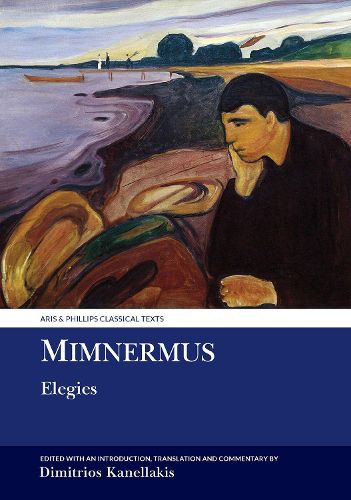Readings Newsletter
Become a Readings Member to make your shopping experience even easier.
Sign in or sign up for free!
You’re not far away from qualifying for FREE standard shipping within Australia
You’ve qualified for FREE standard shipping within Australia
The cart is loading…






The seventh-century BCE Greek poet Mimnermus of Smyrna, whom C. M. Bowra called "the most accomplished and the most musical" of the early elegists, has not been as lucky as other poets of his era. Not updated by any recent papyrological discoveries (unlike e.g. Simonides, Archilochus or Sappho), his corpus remains slim, while the last full-scale commentary on his poems is now thirty years old. Hence the aim of this book is straightforward: to bring this unjustly understudied poet back to the forefront of research, and to advocate that, however exciting a papyrological discovery may be, one does not need new fragments to rediscover a classical author, insofar as "every rereading of a classic is as much a voyage of discovery as the first reading" (I. Calvino). This edition introduces a new Mimnermus, whose melancholy, it is argued against the common assumption, is only a generic pretext; behind that elegiac facade lurks a very playful poet, not just verbally and metrically spirited, but also ironical and risque on occasions. The Introduction and Commentary analyze figurative language, alternative meanings, authorial markers, implied audience, performative clues, program of composition, narrative structure, intertextuality, and reception.
$9.00 standard shipping within Australia
FREE standard shipping within Australia for orders over $100.00
Express & International shipping calculated at checkout
The seventh-century BCE Greek poet Mimnermus of Smyrna, whom C. M. Bowra called "the most accomplished and the most musical" of the early elegists, has not been as lucky as other poets of his era. Not updated by any recent papyrological discoveries (unlike e.g. Simonides, Archilochus or Sappho), his corpus remains slim, while the last full-scale commentary on his poems is now thirty years old. Hence the aim of this book is straightforward: to bring this unjustly understudied poet back to the forefront of research, and to advocate that, however exciting a papyrological discovery may be, one does not need new fragments to rediscover a classical author, insofar as "every rereading of a classic is as much a voyage of discovery as the first reading" (I. Calvino). This edition introduces a new Mimnermus, whose melancholy, it is argued against the common assumption, is only a generic pretext; behind that elegiac facade lurks a very playful poet, not just verbally and metrically spirited, but also ironical and risque on occasions. The Introduction and Commentary analyze figurative language, alternative meanings, authorial markers, implied audience, performative clues, program of composition, narrative structure, intertextuality, and reception.